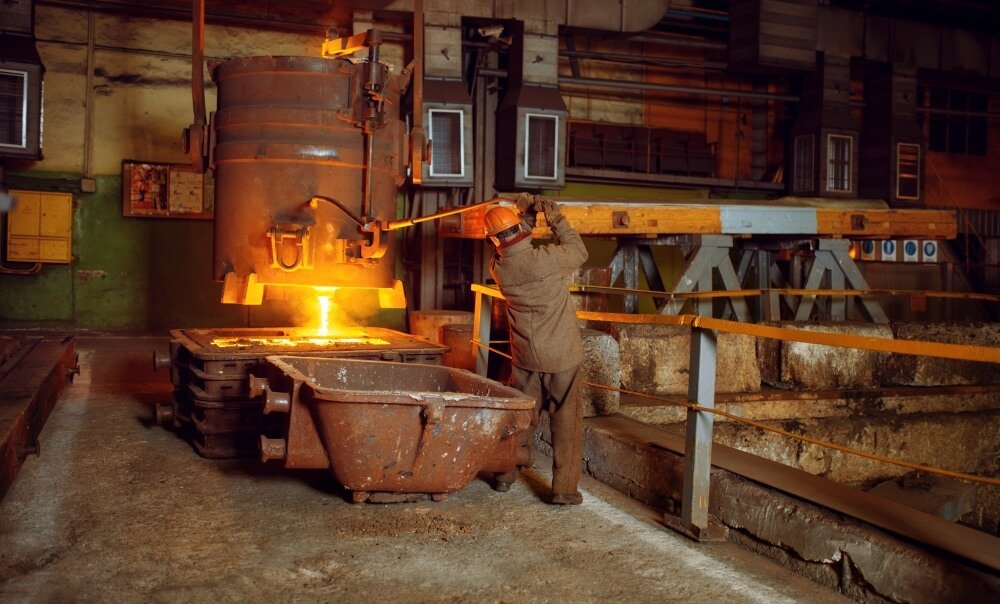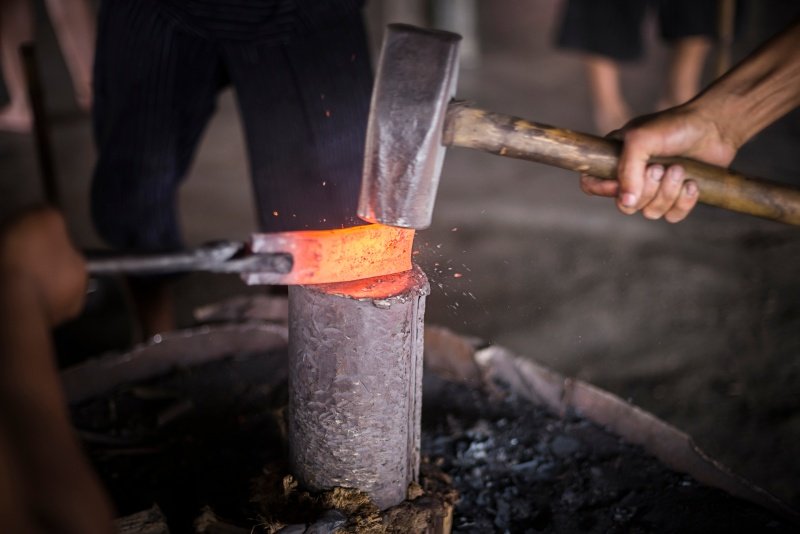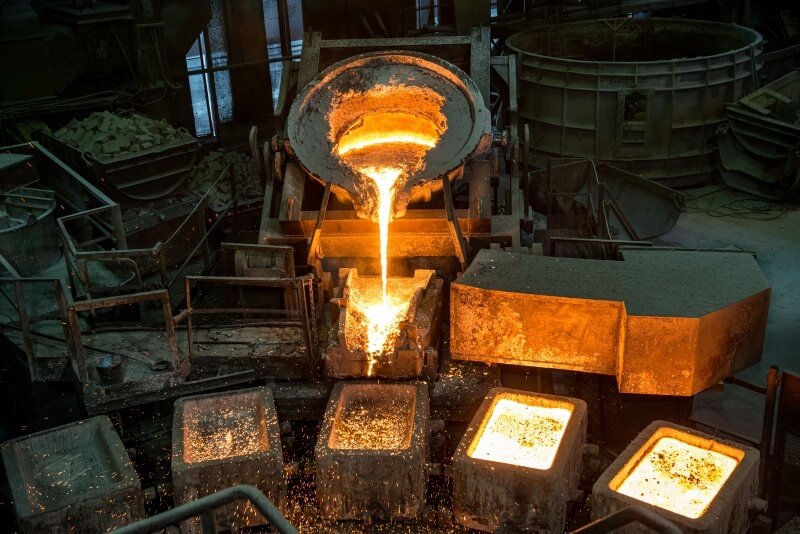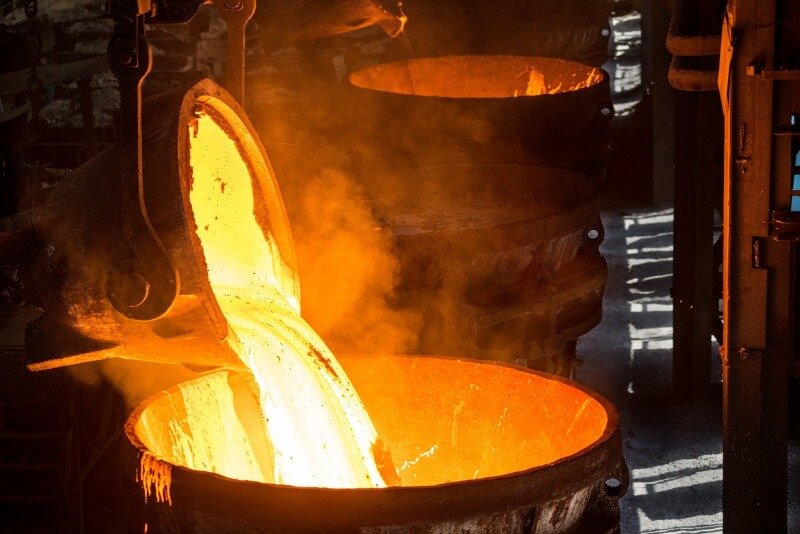Sourcing complex stainless steel parts is hard—and the wrong process invites defects, overruns, and delays. This guide centers on stainless steel die casting, giving you a clear, practical roadmap to produce durable, precise, and cost-effective components every time.

1. Intro to stainless steel die casting
This process creates parts by injecting molten stainless steel into a reusable mold, or die, under high pressure. This method is ideal for producing large quantities of complex parts with high precision. It is a cornerstone of modern manufacturing for a reason.
What is stainless steel die casting?
It is an industrial process that forms a final product by forcing molten stainless steel into a mold cavity at high velocity and pressure. Here’s the deal: once the metal solidifies, the two die halves are opened, and the casting is ejected. This cycle repeats rapidly, allowing for high-volume production.
- High pressure ensures detailed, net-shape parts.
- Reusable steel dies lower per-part costs.
- The process is highly automated and fast.
Why choose this casting process?
You should choose die casting for its exceptional dimensional accuracy and the smooth surface finish it produces, often eliminating the need for secondary machining. What’s the bottom line? It’s a cost-effective solution for complex, high-volume orders where consistency is key.
- Excellent for thin-walled components.
- Produces parts with tight tolerances.
- High production rates reduce lead times.
2. Grades for stainless steel die casting
Selecting the right grade is critical for achieving the desired mechanical properties and corrosion resistance in your final product. Austenitic stainless steels like SS304 and SS316 are popular choices. Their composition ensures good castability and performance.
Which steel grades work best?
Grades 304 and 316 are top contenders for die casting because they offer a great combination of corrosion resistance, strength, and fluidity when molten. You might be wondering: which one is right for your project? The choice hinges on the part’s end-use environment.
- Stainless Steel 304: Ideal for general-purpose applications.
- Stainless Steel 316: Best for harsh or corrosive environments.
- Other Austenitic Grades: Can also be used effectively.
How do SS304 and SS316 differ?
The key distinction is that SS316 contains molybdenum, giving it superior resistance to chlorides and acids compared to SS304. So, what does this mean? For parts exposed to marine or chemical conditions, SS316 provides enhanced durability. For most other uses, SS304 offers a great balance of performance and cost.
- SS304 is known as 18/8 steel (18% chromium, 8% nickel).
- SS316 adds about 2-3% molybdenum for enhanced protection.
- This addition makes SS316 a more premium and costly option.
Key Takeaway: Choose SS316 for superior corrosion resistance in demanding applications and SS304 for a cost-effective, all-around performer.
| Feature | Stainless Steel 304 | Stainless Steel 316 |
|---|---|---|
| Molybdenum Content | None | 2-3% |
| Corrosion Resistance | Good | Excellent |
| Best For | General Applications | Marine & Chemical |
| Cost | Lower | Higher |
3. The stainless steel die casting process
The process is a sequence of precise steps designed for efficiency and repeatability, from die preparation to the final finished part. Understanding this workflow helps you appreciate how high-quality components are made. It ensures consistency across thousands of units.
What are the main process steps?
The cycle begins with clamping the two die halves together, followed by injecting molten steel into the cavity under high pressure. Here’s the kicker: the metal cools and solidifies almost instantly, after which the die opens and ejector pins push the casting out. The process is then ready to repeat immediately.
- Die clamping and preparation.
- Molten metal injection.
- Cooling and solidification.
- Ejection of the finished part.
How are dies and patterns made?
Dies are precision-machined from high-strength tool steel to withstand extreme temperatures and pressures. But that’s not all: they are engineered as two halves that lock together to form the part’s negative shape. Their durability allows for hundreds of thousands of casting cycles.
- Dies are created using CNC machining for accuracy.
- They often include complex features like sliders or cores.
- No pattern is consumed, as the die itself is the reusable mold.
Key Takeaway: The die casting process is a highly automated, multi-step cycle centered around a durable, precision-machined steel die.
| Step | Description | Key Factor |
|---|---|---|
| 1. Die Preparation | Cleaning and lubricating the die halves. | Proper lubrication. |
| 2. Injection | Forcing molten steel into the die. | High pressure and speed. |
| 3. Cooling | Allowing the metal to solidify. | Controlled temperature. |
| 4. Ejection | Removing the part from the die. | Ejector pin system. |
4. Investment vs. stainless steel die casting
While both are popular casting methods, die casting and investment casting serve different needs based on volume, complexity, and material. Die casting uses a permanent metal mold, whereas investment casting uses a disposable ceramic mold. This fundamental difference dictates their ideal applications.
What is investment casting?
Investment casting, or lost-wax casting, involves creating a wax pattern, coating it in a ceramic shell, and then melting the wax out to create a mold. Here’s the interesting part: because the mold is broken after each use, it can create highly intricate shapes with no draft angles. This method is valued for its design freedom.
- Creates a new ceramic mold for every part.
- Allows for extremely complex geometries.
- Suitable for a wide range of alloys.
When should I choose die casting?
Choose stainless steel die casting for high-volume production runs where speed and low per-part cost are priorities. The truth is: its high initial tooling cost is quickly offset by fast cycle times and minimal secondary operations. Die casting is the champion of mass production.
- Ideal for orders of thousands to millions of parts.
- Offers excellent consistency and repeatability.
- Best for parts with thin walls and fine details.
Key Takeaway: Opt for die casting for high-volume, high-speed production, and choose investment casting for lower volumes of highly complex or specialized parts.
| Feature | Die Casting | Investment Casting |
|---|---|---|
| Mold Type | Reusable Metal Die | Disposable Ceramic Shell |
| Best Volume | High (1,000+) | Low to Medium |
| Tooling Cost | High | Low |
| Part Complexity | High (with draft) | Very High (no draft) |
5. Sand vs. stainless steel die casting
Sand casting and die casting represent two different ends of the casting spectrum in terms of precision, surface finish, and production speed. Sand casting uses a disposable sand mold, making it flexible but less precise. Die casting’s reusable steel mold offers superior accuracy for mass production.
How does sand casting work?
This method involves packing sand around a pattern to create a mold, which is then filled with molten metal. Now, think about this: the sand mold is destroyed to retrieve the part, making it suitable for large, simple components and low-volume orders. It is one of the oldest and most versatile casting techniques.
- Uses a temporary, single-use sand mold.
- Ideal for very large parts (from kilos to tons).
- Low tooling costs make it great for prototypes.
Is die casting more precise?
Absolutely. Stainless steel die casting produces parts with much tighter tolerances and a smoother surface finish than sand casting. What does this mean for you? It often eliminates the need for costly and time-consuming secondary machining operations. This precision is a direct result of the rigid, machined steel die.
- Achieves net-shape or near-net-shape parts.
- Tolerances are measured in micrometers.
- Results in a superior, consistent surface quality.
Key Takeaway: Die casting is the superior choice for precision, surface finish, and high-volume production, while sand casting excels for large parts and prototyping.
| Attribute | Die Casting | Sand Casting |
|---|---|---|
| Precision | Excellent | Fair to Good |
| Surface Finish | Smooth | Rough |
| Production Speed | Fast | Slow |
| Best Use | Complex, high-volume parts | Large, simple parts; prototypes |
6. Defects in stainless steel die casting
Even with a highly controlled process, defects can occur if variables are not properly managed. Common issues include shrinkage, porosity, and surface flaws. Understanding their causes is the first step toward prevention and ensuring part quality.
What are common casting defects?
Common defects include porosity (gas bubbles), shrinkage (voids from cooling), and surface imperfections like flow lines or cracks. The real story is: most of these issues stem from improper temperature control, pressure settings, or die design. A good manufacturer knows how to mitigate these risks.
- Porosity: Trapped gas or air bubbles.
- Shrinkage: Voids created as the metal cools.
- Surface Flaws: Issues like cracks or flow lines.
How can I prevent shrinkage?
Preventing shrinkage involves ensuring the molten metal fills every part of the die and compensating for volume loss during solidification. Here’s a simple trick: proper gate and runner design, along with optimized injection pressure, forces more metal into the cavity as it cools. This effectively counteracts the formation of shrinkage voids.
- Optimize gate and runner design.
- Maintain correct injection pressure.
- Ensure proper die temperature control.
Key Takeaway: Preventing casting defects relies on meticulous control over process parameters like temperature, pressure, and die design.
| Defect | Primary Cause | Prevention Strategy |
|---|---|---|
| Porosity | Trapped gas | Proper venting, controlled fill speed. |
| Shrinkage | Metal solidification | Optimized pressure and die design. |
| Flow Lines | Uneven cooling | Adjust injection speed and temperature. |
7. Quality in stainless steel die casting
Maintaining quality in stainless steel die casting hinges on adhering to established standards and controlling dimensional tolerances. Reputable manufacturers use rigorous inspection processes. This ensures every part meets the client’s exact specifications.
What standards apply to casting?
Industry standards like those from ASTM (American Society for Testing and Materials) and ISO (International Organization for Standardization) govern material specifications and quality. Here’s the point: these standards ensure the chemical composition and mechanical properties of the cast parts are consistent and reliable. Compliance is a hallmark of a quality supplier.
- ASTM A995: For cast austenitic-ferritic stainless steels.
- ASTM A890: Covers iron-chromium-nickel-molybdenum alloys.
- ISO 9001: For quality management systems.
How are tolerances controlled?
Tolerances are controlled through precise die engineering, consistent process parameters, and regular maintenance of the casting machine. It gets better: modern foundries use CMM (Coordinate Measuring Machines) and other advanced metrology tools to verify dimensions. This ensures every part falls within the specified tolerance range.
- Precision-machined dies are fundamental.
- Automated process controls maintain consistency.
- Regular inspection and verification are key.
Key Takeaway: Quality is assured by adhering to industry standards and using advanced process controls to maintain tight dimensional tolerances.
| Quality Aspect | Controlling Factor | Standard/Method |
|---|---|---|
| Material Properties | Alloy Composition | ASTM, ISO standards |
| Dimensional Accuracy | Die Design, Process Control | CMM Inspection |
| Consistency | Automation, Maintenance | ISO 9001 System |
8. Costs of stainless steel die casting
The cost of stainless steel die casting is influenced by several factors, including tooling, material choice, and production volume. While the initial investment in dies can be high, the process is extremely cost-effective for large-scale production. Understanding the cost breakdown is key to budgeting your project.
What factors influence cost?
Key cost drivers include the complexity of the part, the material selected, the size of the production run, and any required finishing operations. The bottom line is simple: more complex dies, premium materials like SS316, and smaller volumes will increase the per-part cost. High-volume orders spread the tooling cost, making each part cheaper.
- Tooling Cost: The initial investment in the die.
- Material Cost: Price of the chosen stainless steel grade.
- Volume: Higher volumes lead to lower unit costs.
How do materials affect price?
Material choice has a direct impact on the final price. For example: stainless steel 316, with its added molybdenum, is more expensive than the more common 304 grade. The price difference reflects the enhanced corrosion resistance and performance you get with premium alloys.
- SS316 is more expensive than SS304.
- Specialty alloys will command a premium price.
- Material prices fluctuate with market conditions.
Key Takeaway: Die casting is most cost-effective for high-volume orders, where the initial tooling cost is amortized over thousands of parts.
| Cost Factor | High Impact | Low Impact |
|---|---|---|
| Part Complexity | Yes | No |
| Material Choice | Yes | No |
| Production Volume | Yes | No |
9. Uses for stainless steel die casting
Thanks to its strength, corrosion resistance, and precision, stainless steel die casting is used across a wide range of industries. It is the go-to method for manufacturing durable, complex parts in demanding environments. Its versatility makes it invaluable in modern engineering.
What industries use casting?
You will find die-cast stainless steel parts in the automotive, medical, aerospace, and consumer electronics industries, among others. The reason is clear: these sectors demand high-strength, reliable components that can be produced in large quantities. Die casting meets these needs perfectly.
- Automotive: For engine components, brackets, and housings.
- Medical: For surgical instruments and device components.
- Aerospace: For high-strength structural parts.
What parts are typically made?
Typical parts include pump components, valve bodies, gears, impellers, and complex housings for electronic devices. But it doesn’t stop there: anything requiring intricate shapes, high strength, and a great surface finish is a candidate for die casting. The possibilities are vast.
- Fluid handling components (pumps, valves).
- Mechanical parts (gears, levers).
- Enclosures and housings for electronics.
Key Takeaway: Die casting is a versatile process used to create critical components for a diverse array of demanding industries.
| Industry | Example Parts | Key Requirement |
|---|---|---|
| Automotive | Turbocharger wheels, fuel system parts | High strength, heat resistance |
| Medical | Surgical tools, implantable device parts | Biocompatibility, sterility |
| Consumer Electronics | Phone chassis, laptop hinges | Aesthetics, thin walls |
10. Forging vs. stainless steel die casting
Forging and die casting are both metal-forming processes, but they work very differently and produce parts with distinct characteristics. Forging shapes metal through compressive force, creating a dense grain structure. Die casting shapes molten metal in a mold.
How does forging differ?
Forging involves heating a solid metal billet and shaping it with a hammer or a press. Here’s the main difference: this process aligns the metal’s grain structure, which significantly increases its strength and toughness. Forging creates parts that are exceptionally durable and resistant to impact.
- Shapes solid metal, not molten.
- Creates a directional grain flow.
- Results in superior mechanical strength.
Which process is stronger?
Forged parts are generally stronger and more durable than cast parts. But there’s a catch: this strength comes at the cost of design complexity. Die casting can create much more intricate and detailed shapes than forging can.
- Forging produces the strongest parts.
- Casting offers greater design freedom.
- The choice depends on whether strength or complexity is the priority.
Key Takeaway: Choose forging for simple, high-strength parts and die casting for complex, high-volume components where intricate design is paramount.
| Feature | Die Casting | Forging |
|---|---|---|
| Process | Molten metal in a mold | Solid metal under pressure |
| Strength | Good | Excellent |
| Part Complexity | High | Low |
| Best For | Intricate shapes | High-impact applications |
Conclusion: Partner with the Experts
Stop settling for subpar components. Contact Precisionvast today to discuss your project and get a quote for high-precision stainless steel die casting. This guide has shown you how to navigate material selection, process differences, and quality control to eliminate uncertainty and defects from your production cycle. Our team provides end-to-end support, from design consultation to finished product delivery, ensuring your parts meet exact specifications.
Frequently Asked Questions (FAQ)
- Q1: Can I use any stainless steel grade for casting?
- While many grades can be cast, grades like 304 and 316 are preferred for their excellent flow properties and corrosion resistance, ensuring high-quality results.
- Q2: How complex can my part be with die casting?
- Die casting excels at producing highly complex and intricate parts with thin walls and fine details that are difficult to achieve with other methods.
- Q3: How can I ensure my parts have no defects?
- Partnering with an experienced manufacturer who controls variables like temperature, pressure, and cooling time is the best way to minimize defects like porosity and shrinkage.
- Q4: Is stainless steel die casting worth the cost?
- For high-volume production, the initial tooling cost is offset by low per-part costs, high-speed production, and minimal finishing, making it very cost-effective.
- Q5: Can I achieve very tight tolerances with this?
- Yes, stainless steel die casting is known for its ability to produce parts with excellent dimensional accuracy and tight tolerances, often eliminating the need for secondary machining.




